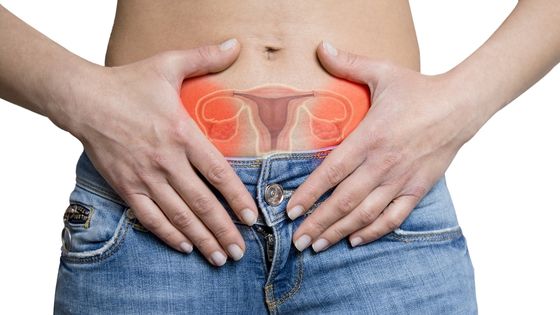Nowadays, you must have come across women who suffer from cysts in the ovary. Ovaries are a crucial part of the female reproductive system. You will find the over is in the lower abdomen on both sides of the uterus. A female body has two ovaries that help them to produce two essential hormones of the body – progesterone and estrogen, as well as eggs for fertilization. When cysts develop in these ovaries, they stand as an obstruction in the regular menstrual cycle.


According to the gynecological clinic for women’s wellness in London, ovarian cysts are very commonly found these days. There can be several causes that lead to the development of these cysts in the ovaries. However, if you can early stage and diagnose them thoroughly, you can eliminate these cysts. Many people do not have a steady knowledge of ovarian cysts. As a result, they start panicking the moment they are detected with one.
To help you in this respect, we have come up with a blog on ovarian cysts. In this blog, we will share with you every detail that you need to know about ovarian cysts, their causes and symptoms, how you can diagnose them, and the treatment that you need to undertake to eliminate ovarian cysts. Therefore, without further delay, let’s get into the details of the blog right away.
What are ovarian cysts?
The ovarian cysts look like sacs that are present on the surface of the ovaries and filled with fluid. Since female bodies have two ovaries located on either side of the uterus, women are the most affected by ovarian cysts. The ovary looks like the shape of an almond. The primary purpose of ovaries is to produce, develop and mature the eggs. These eggs are released through a female body every month in the form of monthly cycles, especially during the pregnancy period.
These days ovarian cysts have become very common. One of the surprising factors about ovarian cysts is they do not show any symptoms. So, even if you have ovarian cysts inside your abdomen, you will barely understand their presence. Neither do they showcase any discomfort, nor produce any pain. The moment you receive the pain, the ovarian cyst has already reached a different stage.
The ovarian cyst is not the same for all. In some cases, it can be burst open or twisted or may get ruptured as well. The rupture of an ovarian cyst is the last thing that you can hope for. The moment the cyst burst it leads to severe pain and cramping. Also, there is profuse bleeding accommodated with unwanted discomfort in the lower abdomen. If you have to stay away from an ovarian cyst, we recommend you visit a gynecological clinic and undergo regular pelvic examinations.


Symptoms of ovarian cyst
As we have already mentioned earlier, you will not find any symptoms of an ovarian cyst. However, the symptoms start showing once the cyst starts growing gradually. The symptoms of ovarian cyst include the following:
- Abdominal swelling and bloating
- Pain in the thighs and lower back
- Painful bowel movements
- Painful sexual intercourse
- Tenderness in the breasts
- Vomiting and nausea
- Pain in the pelvic area before and during the menstrual cycle
- Rapid breathing and dizziness
Types of ovarian cysts
Ovarian cysts can be of various types like endometrioma cysts and dermoid cysts. However, of all the types of ovarian cysts, the most popular ones are functional cysts. These functional cysts can be divided into two categories – the follicle cyst and the corpus luteum cyst. Let’s have a detailed understanding of each one individually.
1. Follicle cyst
When a woman has a menstrual cycle, the egg produced by the ovary develops in the form of a sac. This is known as the follicle. Both ovaries have two sacs every time a woman has menstruation. Generally, these sacs break and release the egg which leads to menstrual bleeding. When the follicle does not break and the fluid inside the stored, it develops in the form of a cyst. This is known as a follicle cyst.
2. Corpus luteum cyst
When the ovaries release an egg, the follicular sack gradually dissolves. When these sacs do not get dissolved, it blocks the follicular opening. As a result, the fluid inside the sacs gets accumulated and develops into a corpus luteum cyst.
Some of the different types of ovarian cysts include dermoid cysts, endometrium, and cystadenoma cysts. In a dermoid cyst, the ovary has satellite growths that contain fat hair and other tissues. On the other hand, in the endometrium, the uterus gets filled with the production of ultimately gets attached to the ovaries to form a cyst. Again, in the case of cystadenomas, you will notice noncancerous growth on the outer portion of the ovaries.
How to diagnose ovarian cysts?
The initial step in figuring out if you are suffering from an ovarian cyst is to undergo a pelvic examination. Since an ovarian cyst does not show any symptoms, it is better to undergo a regular screening of the pelvic area at least once a year. This will help to detect the cyst at an early stage.
One of the potential methods of diagnosing and ovarian cyst is to undergo an ultrasound test. In an ultrasound test, the doctor uses high-frequency sound and radio waves to capture images of your internal organs. The ultrasound also helps to determine the location size composition and shape of the cyst.
Doctors use some specific imaging tools to diagnose an ovarian cyst from the outside. Some of the common imaging tools include MRI, city scan, and ultrasound devices. The function of a city scan is to produce cross-sectional images of the ovaries and the other internal organs in the reproductive system. An MRI is used to gather in-depth imaging of the body’s internal organs by using the required magnetic fields. An ultrasound device is used to get a detailed view of the ovary.
Conclusion
Whatever be the cause of an ovarian cyst, you need to visit a gynecological clinic for women’s wellness in London as soon as possible. If you reach out to a doctor at an early stage, you can eliminate the cyst from your ovary with the help of proper medications. On the other hand, if you find out the cyst at a delayed stage, the doctor might recommend you treat the cyst through surgery. If the case is too complicated, your ovaries can be removed from the body surgically.
You can visit here to read more blog about health, home improvement, business and more.
















